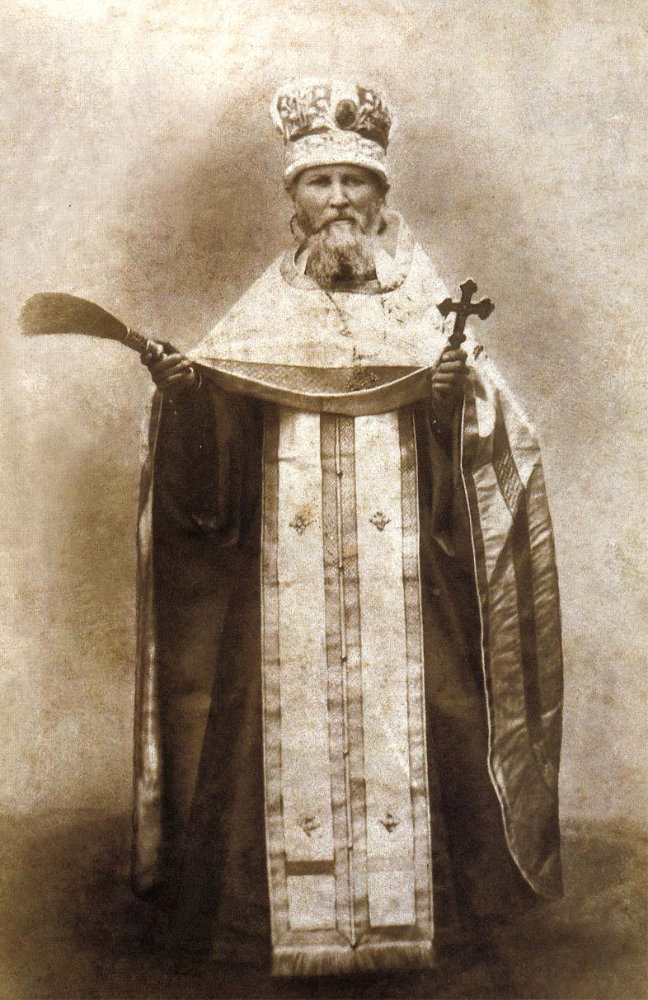St John of Kronstadt
On 19th October 1829, a son was born to poor and pious peasants living in Soura, a village in the province of Archangelsk, Northern Russia.
As the newborn infant was sickly, the decision was made to baptize him immediately, and he was named for the major saint of the day, St John of Ryla. By the prayers of his heavenly patron the baby boy survived and grew in obedience to his parents. However, the strength of God was made perfect in weakness, when the child John proved to be slow to learn. He prayed fervently, and was granted grace, which more than compensated for his natural deficiency, so that he became an excellent student and eventually went on to study at the St Petersburg Theological Academy.
St John was ordained in 1855 after a dream in which he saw himself officiating in a cathedral he had never seen before. It later became apparent that it was St Andrew’s Cathedral in Kronstadt, near St Petersburg, where St John was to spend fifty-three years in extraordinary service to God and man. The ordination was made possible by his marriage earlier that year to Elizabeth Nesvitsky, the daughter of the cathedral’s archpriest, but the couple were enabled by grace to live as brother and sister throughout their married life.
From then on, St John poured himself out each and every day for his flock. There was an especially great pastoral need in Kronstadt, as the town was a naval base, full of poverty and depression and many of the most dangerous criminals of St Petersburg were exiled there.
St John’s day would begin early with Matins in the cathedral at 4am. As St John’s holy manner of life became better known, the people of Kronstadt flocked to see him and to ask for his prayer at the Divine Liturgy which he served every single day. St Andrew’s Cathedral had room for 5000 people, and although almost unbelievable today, is said to have been packed full on most days. St John loved the divine services, and in particular celebrating the Liturgy. His love for this great Mystery is further indicated by the way in which St John is so often depicted in ikons holding the chalice.
After the Liturgy had ended, St John would next turn his attention to the other main aspect of his priestly duties- practical love for his fellow man. He founded the Home of Constructive Labour in 1882, which included not just workshops for the unemployed, but also amenities- from a public eating house to a library and gardens- providing nourishment for both body and soul. To give a sense of the scale of this operation, in 1896 the eating house provided between 400- 800 dinners everyday, and 2, 721 persons received medical treatment at the home.
On an individual level, he would travel around Kronstadt, or regularly by train to St Petersburg, to visit the needy. Whether visiting the sick, serving molebens or carrying out other priestly duties, St John never had a moment to himself, but was always among the people. As he became better known and loved throughout Russia, in scenes reminiscent of those in the Gospels, great crowds would follow and press upon him wherever he went and everywhere was heard: ‘Father, you are ours, dear, you are our darling, you pray for us!’’ This intercession of St John for the people- which was always fervent and heart-felt and often accompanied by tears – was well-pleasing to God, for it brought down mercy in the form of such ‘an ocean of miracles’ that he is rightly called ‘wonderworker’.
Although he had had great difficulty in learning how to read and write whilst a youth, St John became a preacher and spiritual writer of great profundity. Apart from his sermons, his most famous work is his spiritual diary published in 1893 under the title My Life in Christ, which, perhaps more than anything else, is what St John is known and loved for. The clarity and simplicity with which he was able to express deep spiritual truths ensured that the work was quickly translated into several languages, with the first English edition published in 1897. Thus it was that St John shared the ‘daily bread’ that nourished him with countless millions of others around the whole world.
However, after months of pain and discomfort, on 20th December, 1908 at 7 o’clock in the morning, the great man of God reposed. St John’s funeral was on a scale utterly unprecedented in Russian history with no fewer than 20, 000 people following the coffin and bells rung in all the churches, even the Protestant ones. St John’s body was then laid to rest in the basement chapel of the St John of Ryla Convent that he had founded in St Petersburg.
St John was the first saint to be glorified by the Church Outside of Russia in 1964, with our own beloved Vladika St John (Maximovitch) heavily involved in promoting his veneration and in composing the church services in his honour. On this 45th anniversary of his glorification let us recall this outstanding man of prayer, his love for the Church’s services and sacrificial service to his neighbour. As a parish priest St John is especially close to us who struggle to live a Christian life in the world, and now in heaven he hears and understands all our difficulties and sorrows. As he said to one of his parishioners shortly before his death:
“Don’t imagine that if I leave, then all is over! Over there, before the Throne, I will pray in the same way and you must continue to tell me everything. I will be even closer, standing before the Throne of the Most High; and I will hear you and will fulfil your request.”
